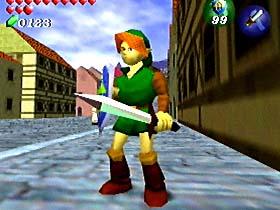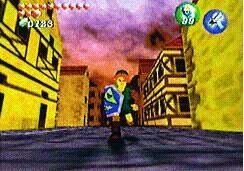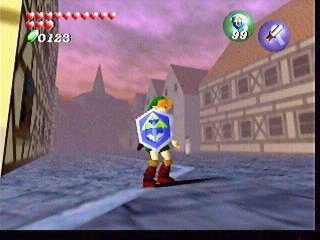An Inside Look at the Development of Zelda 64, part 1
By Ice
The development of Zelda 64 was just about as epic as the game itself ... maybe even moreso. They went through several different versions, character designs, storylines, dungeons, and made some changes that are both bizarre and disappointing.
There is a lot we know about Zelda 64's development, and a lot that we don't know. I present both fact and speculation here ... but I'll let you know if I'm just speculating. Otherwise, everything I write here is fact.
Zelda 64 on SNES?
Zelda 64 originally began as a Super Nintendo game, in 1993-1994. It was actually 50%-70% complete. We don't know much of anything about this game ... what we do know is that it was using a modified version of the Link to the Past engine (which makes perfect sense), and that it was cancelled because the Nintendo 64 was in heavy development and they didn't want to release a big gun on a dying system. It is rumored that there were some screen shots released to a few media sources and gaming magazines, but no one has gotten their hands on them, and I kind of doubt their existence. Screen shots must exist somewhere ... I mean, the game was over 50% done ... but none were released to the public as far as I know.
We don't know for sure if this game had the same storyline as Zelda 64, but I find it highly unlikely. The Zelda 64 that was being developed in 1996 and 1997 didn't even have the exact same storyline that the final version did, so I doubt the 1993-1994 Super Nintendo game did. No one knows for sure that's willing to come public.
First Showing
As the Nintendo 64 neared completion, it was only logical to demo a Zelda game with it's release. At some game show in 1995 ... I don't remember which one ... (I think it was Space World's predecessor) ... there was a small video of Link (who looked like he did in the original Zelda) battling an Iron Knuckle (which also looked like it was built on the Zelda 1 Iron Knuckle). It was a very short video clip, but it was definitely enough to get people interested. It ended up looking nothing like the final Zelda, of course. It's almost exactly like what Nintendo did for the Game Cube Zelda ... showed off a Link that looked like the Ocarina of Time version, but he looks nothing like the cartoon Link that they're showing off now.
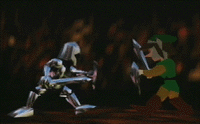
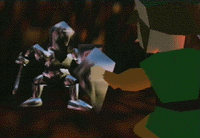
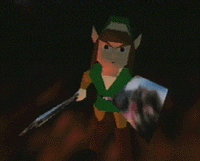
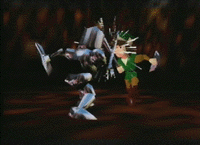
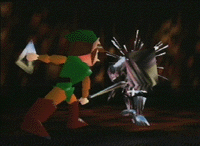
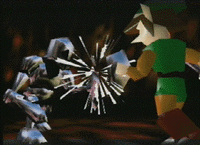
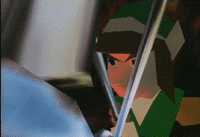
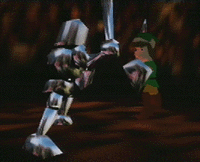
As Super Mario 64 neared completion, the experimentation of Zelda 64's development began. This is where it gets really interesting. They took the Super Mario 64 engine ... the whole thing ... made a few slight modifications, built some wireframes and animation sequences for a Stalfos, Keese (bat), and Link, did the misc artwork for health indicators and whatnot, and began building a dungeon. This dungeon was actually an exact copy of the first dungeon on Zelda 1! That one was a good one to emulate because it was very basic. They did this so they could do a variety of tests and to modify the Mario engine to suit Link. Almost all of the 1996 screen shots are from this dungeon. It is unknown whether or not you actually fought the dragon boss in this dungeon ... but it is known that at the end of it, you walked into a room and got the Triforce. There are a lot of early screen shots showing Link getting the Triforce, and that's what they're from.
Here are some screen shots of this dungeon:
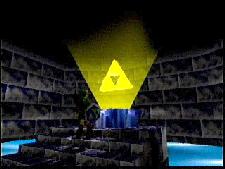
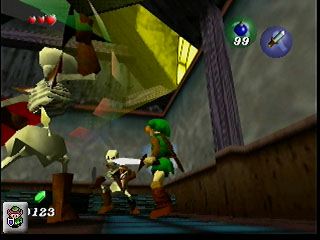
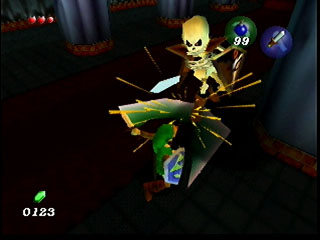
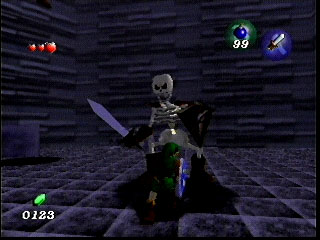
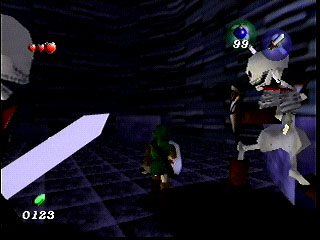
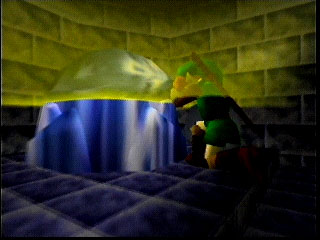
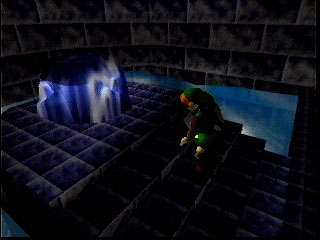
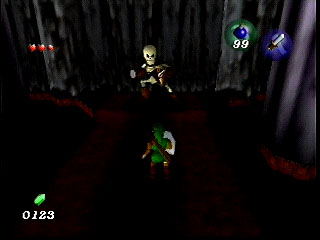
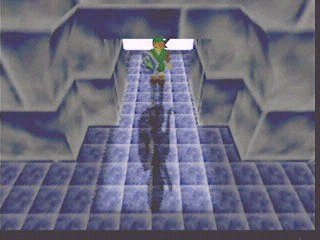
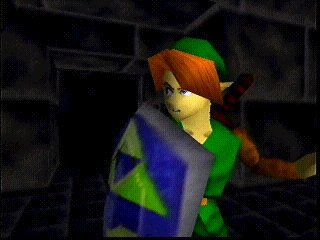
There was also another little test area that they created ... it was a little valley surrounded by mountains. Nothing fancy. Here are some screen shots:
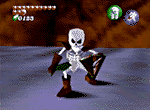
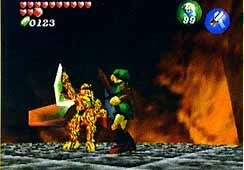
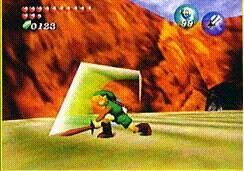
After the initial tests and the basic engine was done (the engine would later on be almost totally revamped), the programmers and artists started creating the world of Hyrule. This was actually a very long period in Zelda's development ... and sadly, over 75% of the screen shots taken during this period are of locations or events that ended up being removed from the game.
One of the areas that ended up staying is Lake Hylia and the Lakeside Laboratory. We don't know if the Lakeside Laboratory is actually a laboratory ... it could be a house ... we never saw the inside. An interesting thing to note is that there was a strange dock near it, and there was a woman in a green dress and long dark ponytail standing in front of it. This woman was removed from the game, as well as the dock we see in a few screenshots. Here is a shot of it:
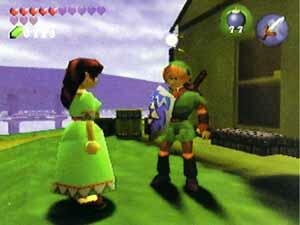
Notice that Link still has the sword and bombs like they were in the Zelda 1 dungeon period, but the amount of Heart Containers that were in the period when they were testing in the valley. This leads me to believe that different items were selectable at this point in the game ... at least for the B button. Lake Hylia looks very interesting in this screenshot. The sky texture is nothing like what originally ended up in the game.
At this point, the dungeons also began to be formulated. Supposedly, there were about ten dungeons planned, eleven if you count Ganon's Castle (and that was planned from the very start). Later on, some would be cut and some would be added. Several dungeons were planned that were never started on ... but three temples were actually started on at some point ... The Skulltula Temple, which we will talk about later and have screen shots of ... Turtle Rock, which we have a screenshot of, and the Snow Temple, which we do not. Turtle Rock has been lost, and most likely was never finished ... but the Skulltula Temple and the Snow Temple were actually completed and modified to appear in Majora's Mask as the first two temples. Another interesting thing to note is that the Snow Temple's entrance is still in the final version of the Ocarina of Time ... we'll talk about that later. Another thing to note is that the Deku Tree wasn't even planned yet ... and when he was included, he wasn't planned to be a temple or even able to be entered until only a measely few months before Zelda 64 went into beta testing.
From the start, there were plans to include a town around Hyrule Castle. This town was started on and probably fairly along in development. Here are some screenshots of it:
